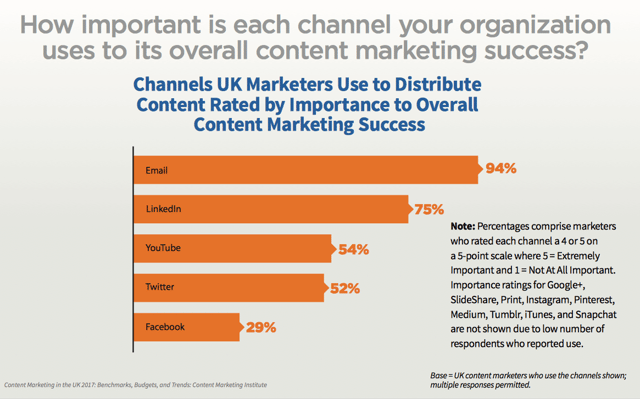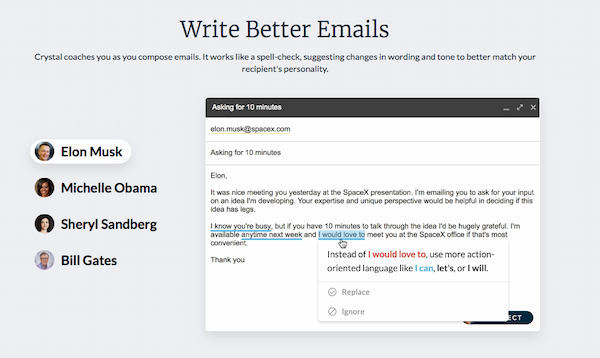Though still in its relative infancy, artificial intelligence (AI) is nonetheless on a course to change the face of marketing forever.
The key promise of artificial intelligence is that it will take care of most – if not all – of the mundane tasks that employees currently handle, freeing up their time to get creative and perform the more business-critical work that machines cannot do.
Naturally, you may assume that effective email writing is something that would be beyond the capabilities of even the smartest machine. After all, here we are now in 2021 and the pressure to humanise our content and deliver on-point personalisation through all correspondence with leads and customers has never been greater.
Sure, artificial intelligence programs may be able to optimise email distribution and organise our inboxes. But can AI actually help marketers write good emails?
Yes, it can be an important tool in writing better emails
Email is Still the Cornerstone of Content Marketing
Email has been used by content marketers for practically as long as email has existed. As such, you might think that the tactic is a bit old hat by now. Today, customer communication is all about social media, right?
Social media is important. But, despite the proliferation of Twitter, Facebook, LinkedIn et al, the fact remains that email is still the cornerstone of all great content marketing strategies – especially if you’re a B2B marketer.
The most recent figures from the Content Marketing Institute reveal that email is still the number one channel that UK marketers use to distribute content, and is indeed favoured by 88% of marketers.
 (Image source: contentmarketinginstitute.com)
(Image source: contentmarketinginstitute.com)
There’s a very good reason why email still enjoys such high popularity – it gets results.
Indeed, even in a social-media-saturated world, a massive 94% of UK marketers rate email as the most important channel for realising content marketing success – way, way above Facebook, which lumbers far behind at just 29%.
 (Image source: contentmarketinginstitute.com)
(Image source: contentmarketinginstitute.com)
Given the importance of email marketing to the success of content marketing, it’s no wonder that marketers are increasingly turning towards the world of artificial intelligence to see if they can make their email campaigns even better – and that includes the actual writing of the emails themselves.
How Artificial Intelligence Can Help You Write Better Emails
Whether you’re in the process of lead nurturing, upselling, or working on a customer retention strategy, you will no doubt be acutely (if not frustratedly) aware that you don’t get a response to every email you write.
Why is this?
It could be that the recipient is simply too busy. It could be that the message got buried beneath a truck-load of others that landed in their inbox at the same time. It might have somehow ended up in their spam folder.
Or it could be that the email that you wrote just wasn’t of sufficient interest or quality in the first place.
You are not alone, this is a common problem. For years upon years on end, marketers have struggled to create the perfect email that generates optimum response rates every time they hit the “Send” button.
As you can imagine, in the past, this has involved a lot of guesswork, and many trials with many errors leading to very slow learning.
But today, there is emerging a plethora of artificial intelligence solutions that enable marketers to allow machine learning technologies determine which subject lines, calls-to-action (CTAs) and body copy recipients are most likely to respond to.
These AI platforms have access to massive pools of user data – from your own company, and from others – which helps them learn very quickly what types of email content resonates best with a target audience.
Then, using natural language technology, these platforms help marketers create optimised subject lines, CTAs and copy that not only read like they were written by a real human being, but are also consistent with the language that the brand typically uses, and deliver great results.
Let’s take a look at a few of these platforms, so you start to use artificial intelligence to give your email writing a boost today.
Phrasee
The first thing to consider when writing an email is the subject line. This is perhaps the most important part of email marketing, as the strength of a subject line ultimately determines whether or not an email is opened by a recipient in the first place.
Phrasee is an artificial intelligence tool that uses machine learning technology to generate and optimise email subject lines that encourage recipients to open, click and convert more often.
The company claims that the subject lines its technology creates beat-out human-written ones 98% of the time. And this has great implications for marketers. No longer do we need to rely on slow trial-and-error processes and gut instinct to craft hit-and-miss subject lines.
With a tool like Phrasee (or a competitor like Persado, for that matter) which relies on raw data, not instinct, to write the best subject lines without human involvement, B2B marketers can spend more time doing what they do best.
Here’s a short explainer video for Phrasee so you can see how it works.
(Video source: phrase.co)
Boomerang
The subject line is one thing – but what about the body copy, the real meat of an email?
Boomerang has recently added a new feature to its Gmail and Outlook plugin – an artificial intelligence-powered tool called Respondable.
Analysing your messages as you write them, Respondable predicts how likely they are to garner a response, and then offers suggestions for how to improve them.
It also analyses data about which emails generated responses and which didn’t, all of which helps train Boomerang’s algorithms to be even more effective the more they’re used.
In addition, Boomerang mines public data sets to help its artificial intelligence system learn the difference between text with positive and negative sentiments, which again helps the tool inform its suggestions for better email copy.
Here’s the video promo.
(Video source: youtube.com)
More Artificial Intelligence Email Marketing Tools
We've highlighted Phrasee and Boomerang’s Respondable – but there are many more email marketing AI tools on the market today.
Check out some of the following:
- Boomtrain – a tool that uses AI to drive increased clicks, engagement and revenue through customer communications, including (though not limited to) email.
- Skyword – an artificial intelligence tool that creates email content recommendations.
- Crystal – this tool scrapes publicly available data about the people on your email list and gives you suggestions on what style of email they may prefer based on their personality.
 (Image source: crystalknows.com)
(Image source: crystalknows.com)
Over to You
Artificial intelligence is set to impact practically every area of marketing – and email is no exception. As one of the most important channels through which to distribute your content, it’s essential that you’re doing all you can to ensure your emails are read. There are many artificial intelligence tools to help your email writing on the market today – so let 2020 be the year you start investigating them and give your business a competitive advantage in the inboxes of your recipients.
If you need help building artificial intelligence into your email marketing campaigns, get in touch with the growth experts here at Incisive Edge today.







